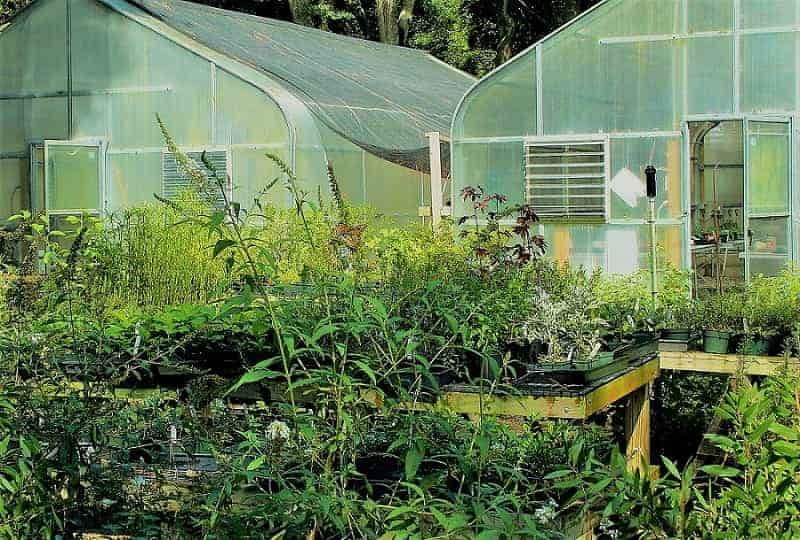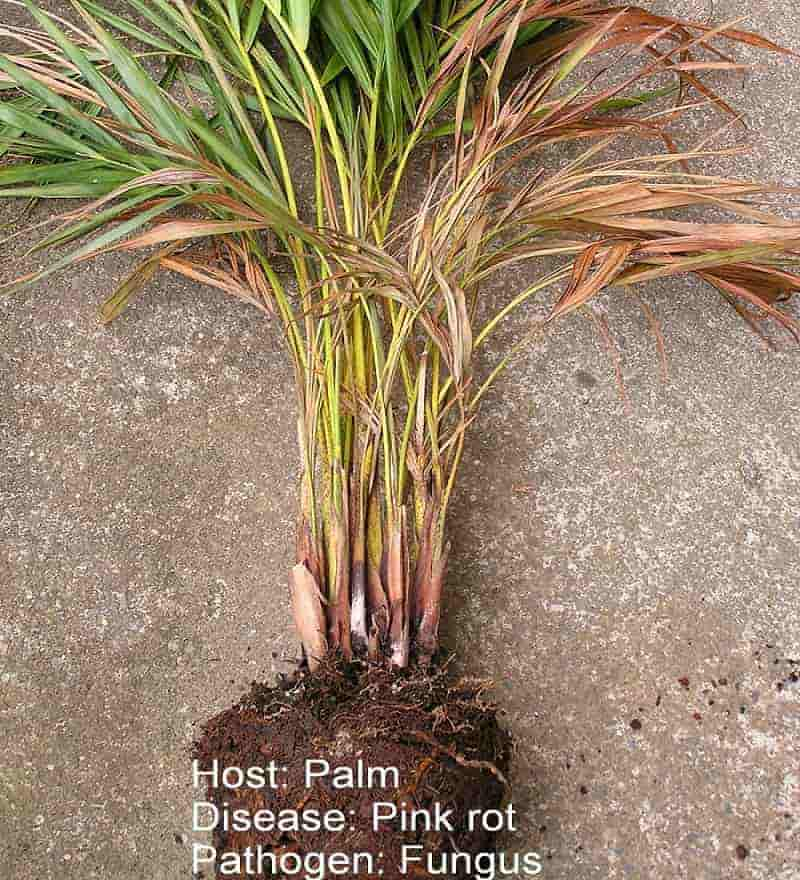- Home
- Tips to Grow Palms
How to grow palm trees
How to grow palm trees may seem like a difficult thing to do! Were you wondering how to go about it? Because you'd love to have a palm tree on your property.
Or maybe you've volunteered to plant and supervise the growing of a palm for an organization. Yet you've never quite done that! Though you've done some gardening.
We're here to help you! With our tips on how to grow palm trees. We'll go over the basics & essentials you'll need to know with our Six Essential Tips to get started.
Feeling overwhelmed by so many palm trees?
You're not alone. We Understand your headaches! At Mission: Palm Trees you'll find clear answers to questions & Step-By-Step Guidance, from real people. With solutions to help. No puzzling shoptalk. No tiring research. So it's easy & fun for you.
6 Essential Tips
for Successfully Growing Palm Trees
Palm trees are iconic symbols of tropical paradise. That may be one reason tempting you to learn how to grow palm trees.
Thing is, they can be a bit of a struggle. Especially when you're growing them outside their true natural habitats.
With the right helpful knowledge and your own loving care, you can have success in learning how to grow palm trees of your own. You'll be proud when you've nurtured these majestic plants in your own backyard or garden.
In this guide, we share six basic, yet essential tips for how to grow palm trees. To help you create your own exotic, Palmy Landscape.
Move along down for all our tips. Or pick the one you want. So you can be sure your palm gets off to a good start!
First Tip for How to Grow Palm Trees
Choose the Right Palm Tree
GET THE PALM SUITED FOR YOUR CLIMATE
The first thing is, you have to think about where you live. What type of climate is it? What are the lowest temperatures during the coldest times of the year?
Important for the Right Palm in the Right Place principle.
WHAT'S YOUR ZONE?
To successfully grow your palm tree, don't even begin to choose one until you know which are the right species for your climate. That depends on USDA Plant Hardiness Zones.
It's important research to learn those best suited for your region. Use that guidance!
RAINY - OR NOT!
Another important factor is moisture requirements. Do you live in an arid region, a very rainy area, or in a place with average yearly rainfall?
Desert Palm Tree Types are best for those with low yearly rainfall averages.

WHEN CLIMATE DOESN'T MATTER
Or maybe that won't be much of a factor. Because you'd rather get a Mini Palm Tree Plant to place indoors near a nice sunny window!
- Then climate won't matter much. You'll just need placement in the area that gets some sunlight during the day.
- It's best then, to know how to go about Potting Palm Trees. And all those details.
- There are many beautifully suitable Indoor Palm Trees to think about.
 Easy Way for Palm Survival Without Climate Worries!
Easy Way for Palm Survival Without Climate Worries!GET HELP
Just remember that different types of palm trees have varying temperature and moisture needs. Or sensitivities.
Consulting your local nursery or horticulturist is an idea. They're usually good at figuring which palm tree varieties thrive in your specific climate & soil conditions.
 Are You Buying Your Palm Tree From a Local Nursery?
Are You Buying Your Palm Tree From a Local Nursery?They Should Have All Kinds of Materials, Plus Help, For Local Palm Growing Conditions
Universities often have horticulture programs which offer advice on growing plants. That may include how to grow palm trees successfully. Check with your local university to see if that's available for you.
For instance, here where we live in Tucson, the University of Arizona has a Cooperative Extension. I've consulted them before. They've offered me diagnostic help when I was worried about my plant. They have articles on a range of helpful subjects.
Like this one about Help for Landscape Palms in Arizona.
HOW HIGH?
One other thing to be aware of: size of the palm you're planting. What height will it become?
- A very tall palm, for example, won't add much delight to your yard when reaching full growth. You may need binoculars to view beautiful frond crowns sitting atop the trunk!
- A large palm may even overpower your home.

THINK ABOUT FLOWERS, FRUIT & FRONDS
Some palms have possibly annoying characteristics. Or could be dangerous! You'd want to know that before your final choice.
DOES IT HAVE A CROWNSHAFT?
Check if your palm tree choice has a crownshaft.
- With those palms, the fronds fall off when completing their useful life.
- Any danger below?
FLOWERS & FRUIT
What type of flowering will it have? Monoecious or Dioecious? That can make a difference, if you'd like to collect seeds.
- Will that palm you like have falling fruits that make a mess?
- Or even large ones, like dropping coconuts. Could be hazardous!
SPIKEY!
Palm trees can have vicious spines. Is that a concern?
- Where are those spines?
- Easily touched by passing persons? That's a problem.
GET YOUR BEST ONE
By choosing the right palm tree, you'll have the first & most important start for learning how to grow palm trees for your location. Helping the palm you choose to have a great start to long-term growth.
Plus you'll keep possible problems to a minimum. Avoiding them down the line.
 An Edited "Liberty" Paraphrasing by Site.
An Edited "Liberty" Paraphrasing by Site.Taken From the Title Card of the Vintage Silent Movie: Safety Last
Plant Your Palm in the Right Location With Good Soil
Now that you've selected just the right species, the 2nd step is planting your palm tree in the right place.
To figure out the best way for your own Landscaping With Palm Trees. How to decide that?
Mission: Palm Trees is made possible by readers like you! If you purchase via a link/ ad here, we may earn a small commission. At no added cost to you. Thanks for your support! Learn more>
A SUNNY SPOT
First consider the exact planting location. Choose a spot that gets sunlight all or most of the day. At least, that's what most palm trees need.
And remember, it's best to check with your local university, your favorite Palm Tree Resource Manual, or your purchasing plant nursery. You'll want to know: does your palm require full sun exposure to thrive?
THE WET
Almost certainly, you'd want to avoid planting where standing water happens after a good rain. Anywhere that heavy rainfall may cause roots to get waterlogged.
That can lead to root rot or other palm diseases.
 Is There a Place on Your Property Where Rain Puddles Don't Soak in Right Away?
Is There a Place on Your Property Where Rain Puddles Don't Soak in Right Away?HOW'S THE DIRT?
Most palm trees the Appropriate Well-Draining Soil. A few palm species need rich organic matter. They need access to soil nutrients.
Typically, soil should be slightly acidic. That's a pH between 6.0-7.0. You can have it tested. Often soil testing labs are available at University Cooperative Extension Offices, at your nearest State University.
Or you can Test Your Soil Yourself>
Tip 3: Basic Palm Tree Planting Techniques
Are you growing your own palm tree, By Obtaining Palm Tree Seeds?
Most don't do it that way.
If you don't, you'll want to know the Best Ways for Planting Your New Palm, when transplanting from the nursery where you Purchased Your Palm Tree.
IT'S WORK!
Are you up for the job of taking the palm from its container?
If not, then you may want to pay extra to have nursery or arborist professionals plant it for you.
 Who Will Dig the Hole That Your Palm Tree Will Live & Grow In?
Who Will Dig the Hole That Your Palm Tree Will Live & Grow In?That's what we did in our yard. Too much for us, at our age (oh my!). Maybe in my much younger days I would've gone for it. But not now!
TIPS FOR DIY PALM TREE PLANTING
Still it's always advisable to ask for professional advice. Meanwhile, here's some elementary tips to remember.
- First few months after transplanting your new palm into the ground, are critical stages.
- Some palm species shouldn't be transplanted until their initial trunk growth is complete. Sabal palmetto, for example.
- Check with your purchasing nursery about this, for your palm.
PLANTING TIME
In truly tropical zones, planting can be done at any time of the year. But in all areas, it's best not to plant in winter.
TIPS TO WARD OFF WATER STRESS
Water stress is the biggest disaster with learning how to grow palm trees. Tips to minimize it:
- Has your nursery already removed leaves? This is the one time some older green fronds could be removed in most species. For transplant prep, because your palm will first focus on roots.
- When your palm arrives, fronds should be tied up together. But once planted, unsecure that binding. Air flow through fronds decreases risk of rot disease.
- The exception to the above rule is desert palm trees. Keep tied up about 3 weeks in arid areas. While acclimating, to limit leaf water loss.
THE PLANTING
Plant Your New Palm right away. If impossible, keep the entire tree moist & out of the sun.
- Planting hole must be sized right & have good drainage.
- Plant the same depth as they were growing before transplantation.
- Pat down the surrounding soil as you fill in. Eliminating air pockets.
INITIAL WATERING
- Water thoroughly until the soil's totally wet, but not soppy.
POST PLANTING CARE/EXPECTATIONS
Is your palm large? Be sure it has support bracing for its first 8 months. Until stable. No Nailing Supports Ever! Into the trunk! Use bands or straps.
First 6 months after the planting, the root ball should stay moist. Maintain a balance, though. Soil shouldn't be soggy.
New frond growth might not happen for about one year. Palm trees put initial energy into growing new roots that support eventual leaf growth.
Since root growth takes that long, an absorbable, liquid palm fertilizer could be lightly sprayed.
Begin a fertilizer plan soon after planting.
- Time-release palm fertilizer can be used lightly on the soil, but not against the trunk.
- If planting out of a pot, there may be remaining fertilizer in the soil.
- When new leaves begin sprouting, begin with some increased nitrogen in your fertilizer.
- After the new fronds look healthy and green, start a Regular Palm Fertilizer Plan.
Water Regularly, But Don't Overwater
Fourth, proper watering is key to successfully growing palm trees. They need regular watering, especially during the first few months after planting.
TOO MUCH OF A GOOD THING!
But remember there IS too much of a good thing! Overwatering Palm Trees can be harmful. Tempting several palm tree problems down the road.
Overwatering gets the soil waterlogged. Soil aeration suffers, Oxygen loss occurs. Leading possibly to root rot. Fungus diseases are attracted to wet environments. All of which can damage or even kill your palm tree.
 Rot Happens! Don't let it happen to your youthful palm tree!
Rot Happens! Don't let it happen to your youthful palm tree!THE RIGHT WATERING PLAN
Steps to tell if you’re Watering Palms Correctly:
- Your newly planted palm tree needs more frequent watering than established ones.
- Depending on your environment, related to your palm species, water needs will be low to high.
PLUS YOUR ENVIRONMENT
- Palms adapted to arid areas will absolutely find overwatering a distress. Causing illness or physiological issues.
- Palms with rain-forest origins will have stunted growth, even die, without adequate water.
- Learn specific water needs of your particular palm tree, which varies. All based on that very palm you bought. Where was that Palm Originally Specific To?
BASIC WATERING STEPS
- Let the top inch of soil to dry out between waterings.
- Then adjust accordingly, for weather conditions in your area.
Fertilizer For Palm Trees to Ensure Proper Growth
Number 5 is knowing about fertilizing your palm trees. One key to ensuring proper growth. Also helps in maintaining their health.
Also good to know the Landscaping Around Your Palm that could affect fertilizer needs.
DON'T MIX!
To fertilize, place slow-release palm tree fertilizer three times per year. Specific fertilizers for other plants (turf for instance) are harmful to palm trees.
Best to use a Fertilizer Specific for Palm Trees.

HOW TO FERTILIZE
Apply Slow Release Fertilizer type once in spring, once in summer, and once in autumn. That schedule provides palm trees with nutrients they need to prosper through the seasons.
Follow instructions on the package or container. Read about how much fertilizer to use. They should have advice based on your specific tree’s needs and soil type.
Or look it up according to your specific palm species. Then coordinate that with your brand's instructions.
MINERAL SUPPLEMENTS
Some types of palm trees must use a micronutrient supplement. Typically with magnesium or potassium. Nitrogen is normally not a needed supplement for palm trees. A minimal amount can be okay, especially if time-released.
Some areas are naturally more susceptible to lack those soil nutrients. Supplements help palms access all needed nourishment. So you see its best growth.
Prune and Trim Palms Correctly For Healthy Palms
Finally, #6 is one that may save you some work and/or expense!
Find out if your Palm "Self-Prunes" Dead Leaves.
Some do that! Primarily ones that have crownshafts. Which are those with pinnate fronds.
Then you don't have to trim. Only remove dead fronds from the ground As they fall from the palm.
 Crownshaft is above the woody trunk. Where the leaf bases grow from the green tubular trunk.
Crownshaft is above the woody trunk. Where the leaf bases grow from the green tubular trunk.WHY PRUNE A PALM?
Regular pruning or trimming are accomplished for overall health of your palm trees. Done in specific circumstances.
- Removing any dead or dying fronds.
- Plucking diseased or damaged leaves.
- These steps help prevent further disease. Spreading to healthy leaves.
It improves the palm tree's overall appearance. Trimming is also important to maintain the tree's shape & size. It could promote new growth.
HOW TO PRUNE PALM TREES
Knowledge of Pruning Palm Trees is essential with how to grow palm trees. As over-pruning can affect a palm tree's health & growth.
Key nuts & bolts of this job:
- Use clean, sharp tools when pruning or trimming your palm trees. Avoid cutting into the trunk, or leaving jagged edges. That can lead to damage.
WHICH FRONDS GET REMOVED?
- Only remove a maximum of 25% of the leaf crown, or less.
- All green fronds should remain. Any green is part of the palm's food factory! Removing green leaves over time will lead to a "pencil pointing" trunk condition.
- Only remove green leaves if obviously diseased or badly damaged.
- If your palm is tall, consider hiring a professional for the job. Make sure they do it properly!
 Not Many Fronds Left Atop This Palm! How Sad. Photo: Rennett Stowe @Flickr - CC BY 4.0
Not Many Fronds Left Atop This Palm! How Sad. Photo: Rennett Stowe @Flickr - CC BY 4.0The Takeaways
We hope this overview, with six tips for how to grow palm trees, is helpful to you. There's nothing better than viewing your successfully growing palm tree!







